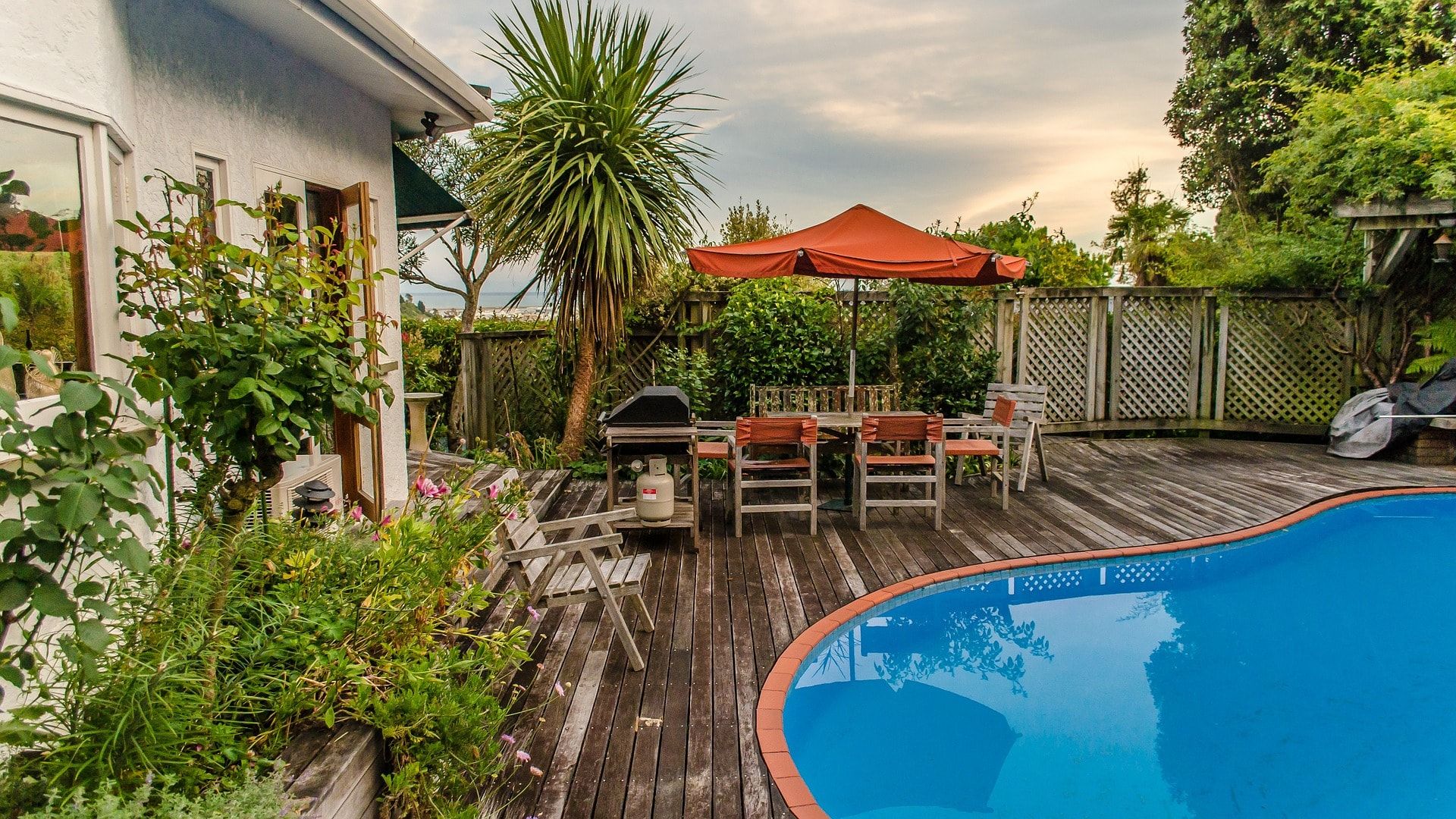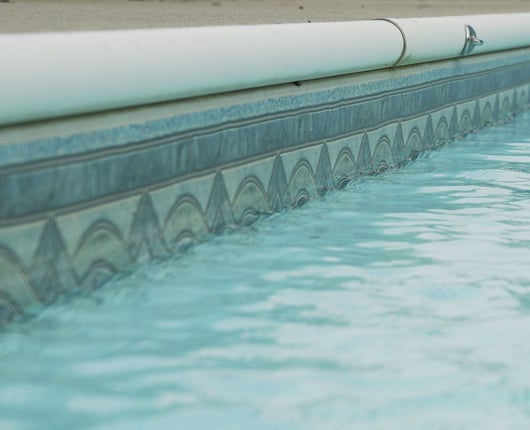
It’s happening. You can’t deny it because you’re reading this article. You are thinking about getting a pool!
Does anyone know yet, or are you secretly getting details about your options so that you’re prepared to make the pitch to family, friends, or a spouse?
Great news, you’ve come to the right place.
First things first, what sets vinyl pools apart from fiberglass or concrete?
Vinyl liner pools generally cost a minimum of $10,000 less to install - ranging from about $20,000 to as much as $65,000. Water chemistry is also a little easier to maintain compared to concrete pools. Much like a fiberglass pool, the vinyl pool offers a smoother surface that doesn’t really attract algae.
Despite these benefits, there are some major negatives to take into account, including longevity, the overall lifetime costs, durability, and design.
At River Pools we specialize in inground fiberglass pools but, being in the pool business, we know a lot about vinyl liner pools as well.
In this article, we’re going to cover some of the essentials of vinyl liner pools to help you make the best decision for yourself and your home.
Let's head in...
How Long do Vinyl Liner Pools Last?
If we’re talking about the structure of the pool, it can last for almost 35 years (as long as it’s not wood). The liner itself, however, will need to be replaced much earlier.
Vinyl liners have a lifespan of about 5-9 years. The sad part? This can be for both thick or thin liners. Sure, a thicker liner should last longer, but if not maintained well or if installed haphazardly, its lifespan will be much shorter.
Let’s break it down a little more. You’ll have the choice to purchase embossed or non-embossed.
- Embossed liners come with divots on the surface. Giving a squishy (for lack of a better term) feeling.
- Non-embossed is the same thickness but has no divots, making it a better option for longevity.
The economic choice is an embossed liner but it can easily be punctured. How easily, you ask? Let’s just say you’ll want to clip your toenails before going for a swim. Yikes!
Non-embossed liners are more expensive, but it will last longer if it’s installed correctly and maintained. Still, if you get 5-9 years from your vinyl pool liner, you’ve done well.

Common Problems with Vinyl Liner Pools
When purchasing a vinyl liner, thickness will inevitably come into play. The less expensive option is the embossed liner, which is a bit thinner. It will last the aforementioned 5-9 years, but tearing is possible. And I don’t mean by taking a rake to your pool. Dog claws, a tree branch, or even your own toes could puncture a hole in the liner.
This doesn’t always mean the entire liner will need to be replaced, but it’s certainly not good for the longevity of the vinyl liner itself.
You could go with the slightly more expensive, non-embossed, liner which is thicker. This liner is more durable, but it’s also heavier which makes it more difficult to install (and more expensive).
The thickness also makes the process of smoothing out wrinkles and getting corners "just right" harder. If the corners aren’t fitted properly, it could leave an air space leading to dry rot. Once dry rot sets in, goodbye pool.
I’ll just make sure there is a warranty! (you say excitedly). Great! Most pools come with a warranty. Some are even 25-30 years. Awesome, right?
Take a second look at the fine print.
Most of the warranties you’ll find are prorated. This means they lose value each year. You might be covered if something happens in year 4 but less likely if something happens in year 7. Also, make a note of the things it doesn’t cover like the labor cost to fix the pool.
So, the question is, how can you make your vinyl pool last as long as possible?
How to Make Your Vinyl Liner Last Longer
The ugly truth is, between vinyl liner replacements, chemical upkeep, electric, and water costs, maintenance on a vinyl liner pool will run you about $7,000 every 10 years. Following these basic rules will help keep the costs as low as possible.
- Make sure to have your vinyl pool installed by a dependable, quality company. If they are experienced and know what they’re doing, chances are you won’t be left with wrinkles on the bottom or air pockets exposing the pool to dry rot.
- Maintain proper pH and chlorine levels. pH is the measure of acidity. If the pH is too low in your pool, it means the acidity is high, making it difficult for chlorine to properly disinfect the water. Having a higher acidity also does damage to the pool equipment and vinyl liner (not to mention, your skin). Maintaining good water chemistry more than helps extend the life of your liner.
- Clip your toenails! Just kidding. Kind of. You can ensure the smooth, beautiful surface of your vinyl liner as long as your dog’s claws steer clear of puncturing holes in it. Make sure it’s not in an area where branches could puncture it either. And seriously, clip your toenails - no one wants to tell that embarrassing story at the next cookout.

Pros and Cons of Vinyl Liner Swimming Pools
Pros
- Cost effective
- Quick installation
- Smooth surface
- DIY friendly
Cons
- Frequent liner replacements
- Not a long lifespan
- Warranty doesn’t cover everything
- Not as many design options
- Can be high maintenance
At an average of $10,000 less than fiberglass and concrete pools, vinyl is cost effective for the short term but will hit your wallet later.
The great news is you won’t have to wait long to enjoy a poolside cocktail, because it only takes 4-8 weeks to be installed. A vinyl liner pool might not be able to offer a beautiful tile design with a tanning ledge, but it does have a smooth surface making walking or sitting quite comfortable.
A Vinyl Liner Pool is Right for You if You:
- Want something less expensive
- Care more about comfort than design
- Plan to maintain the water chemistry
- Don’t mind the maintenance chores
- Want to be swimming within 1-2 months
We hope that this article gave you a better idea of what you can expect as a vinyl liner pool owner. If you're curious about how vinyl liner pools compare to other types of inground swimming pools, download our free ebook below for a full overview.
If you're leaning towards fiberglass, we have a wide selection of shapes and sizes to choose from. Take a look at our pricing guide today, or request a custom quote to see how a durable fiberglass pool will fit with your budget.
Up Next:
Fiberglass vs. Vinyl Liner vs. Concrete Pools: An Honest Comparison
Vinyl Liner Pool Basics: Pros, Cons, and How They’re Made
Top 5 Vinyl Liner Pool Problems and Solutions
Editor's note: This article was updated on September 14, 2023.
Jason Hughes is a partner at River Pools Virginia, a fiberglass pool installation company based in Warsaw, Virginia. With over 20 years of hands-on experience, Jason has dedicated his career to helping families create beautiful, functional backyards while ensuring every fiberglass pool installation meets the highest standards of quality and safety. In addition to his work with homeowners, Jason serves as a GENESIS instructor with the Pool & Hot Tub Alliance (PHTA), where he teaches fiberglass pool installation best practices to pool professionals across the country. Whether he’s on a job site or leading a training session, Jason is passionate about raising the bar for fiberglass pool installations and helping families make confident, informed decisions as they transform their outdoor spaces.
Topics:

